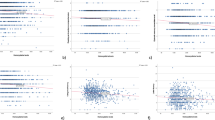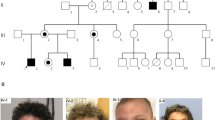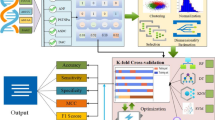Abstract
Both betaine homocysteine methyltransferase (BHMT) and cystathionine β-synthase (CBS) are major enzymes in the metabolism of plasma homocysteine (Hcy). Abnormal methylation levels of BHMT and CBS are positively associated with Hcy levels. The present study is performed to explore the association between the methylation levels in the promoter regions of the BHMT and CBS genes and the efficacy of folic acid therapy in patient with hyperhomocysteinemia (HHcy). A prospective cohort study recruiting HHcy (Hcy ≥ 15 μmol/L) patients was performed. The subjects were treated with oral folic acid (5 mg/d) for 90 days, and the patients were divided into the success group (Hcy < 15 μmol/L) and the failure group (Hcy ≥ 15 μmol/L) according to their Hcy levels after treatment. In the logistic regression model with adjusted covariates, the patients with lower total methylation levels in the BHMT and CBS promoter regions exhibited 1.627-fold and 1.671-fold increased risk of treatment failure compared with higher methylation individuals, respectively. Similarly, subjects who had lower methylation levels (<methylation mean) in BHMT CpG1 had 1.792 times higher risks. Stratified analysis by sex found that lower CBS methylation levels were associated with a 2.128-fold increased risk for treatment failure in males with HHcy. Lower levels of BHMT or CBS promoter total methylation might be associated with increased the risk of treatment failure. These studies suggest that lower levels of BHMT and CBS methylation are all predictors of failure in folic acid therapy for HHcy. However, due to some limitations of this study, such as the small number of the loci tested, further large-scale studies are necessary to verify our observations.
Similar content being viewed by others
Log in or create a free account to read this content
Gain free access to this article, as well as selected content from this journal and more on nature.com
or
References
Messedi M, Frigui M, Chaabouni K, Turki M, Neifer M, Lahiyani A, et al. Methylenetetrahydrofolate reductase C677T and A1298C polymorphisms and variations of homocysteine concentrations in patients with Behcet’s disease. Gene. 2013;527:306–10.
Yang B, Fan S, Zhi X, Wang Y, Wang Y, Zheng Q, et al. Prevalence of hyperhomocysteinemia in China: a systematic review and meta-analysis. Nutrients. 2014;7:74–90.
Wald DS, Law M, Morris JK. Homocysteine and cardiovascular disease: evidence on causality from a meta-analysis. BMJ. 2002;325:1202.
Homocysteine Studies C. Homocysteine and risk of ischemic heart disease and stroke: a meta-analysis. JAMA. 2002;288:2015–22.
de Ruijter W, Westendorp RG, Assendelft WJ, den Elzen WP, de Craen AJ, le Cessie S, et al. Use of Framingham risk score and new biomarkers to predict cardiovascular mortality in older people: population based observational cohort study. BMJ. 2009;338:a3083.
Brustolin S, Giugliani R, Felix TM. Genetics of homocysteine metabolism and associated disorders. Brazilian journal of medical and biological research = Revista brasileira de pesquisas medicas e biologicas. Braz J Med Biol Res. 2010;43:1–7.
Yakub M, Schulze KJ, Khatry SK, Stewart CP, Christian P, West KP. High plasma homocysteine increases risk of metabolic syndrome in 6 to 8 year old children in rural Nepal. Nutrients. 2014;6:1649–61.
Tighe P, Ward M, McNulty H, Finnegan O, Dunne A, Strain J, et al. A dose-finding trial of the effect of long-term folic acid intervention: implications for food fortification policy. Am J Clin Nutr. 2011;93:11–18.
Wald DS, Bishop L, Wald NJ, Law M, Hennessy E, Weir D, et al. Randomized trial of folic acid supplementation and serum homocysteine levels. Arch Intern Med. 2001;161:695–700.
Zappacosta B, Mastroiacovo P, Persichilli S, Pounis G, Ruggeri S, Minucci A, et al. Homocysteine lowering by folate-rich diet or pharmacological supplementations in subjects with moderate hyperhomocysteinemia. Nutrients. 2013;5:1531–43.
Wang X, Qin X, Demirtas H, Li J, Mao G, Huo Y, et al. Efficacy of folic acid supplementation in stroke prevention: a meta-analysis. Lancet. 2007;369:1876–82.
Tian H, Tian D, Zhang C, Wang W, Wang L, Ge M, et al. Efficacy of folic acid therapy in patients with hyperhomocysteinemia. J Am Coll Nutr. 2017;36:528–32.
Anderson JL, Jensen KR, Carlquist JF, Bair TL, Horne BD, Muhlestein JB. Effect of folic acid fortification of food on homocysteine-related mortality. Am J Med. 2004;116:158–64.
Qin X, Li J, Cui Y, Liu Z, Zhao Z, Ge J, et al. MTHFR C677T and MTR A2756G polymorphisms and the homocysteine lowering efficacy of different doses of folic acid in hypertensive Chinese adults. Nutr J. 2012;11:2.
Du B, Tian H, Tian D, Zhang C, Wang W, Wang L, et al. Genetic polymorphisms of key enzymes in folate metabolism affect the efficacy of folate therapy in patients with hyperhomocysteinaemia. Br J Nutr. 2018;119:887–95.
Liang S, Zhou Y, Wang H, Qian Y, Ma D, Tian W, et al. The effect of multiple single nucleotide polymorphisms in the folic acid pathway genes on homocysteine metabolism. BioMed Res Int. 2014;2014:560183.
Mandaviya PR, Stolk L, Heil SG. Homocysteine and DNA methylation: a review of animal and human literature. Mol Genet Metab. 2014;113:243–52.
Elmasry K, Mohamed R, Sharma I, Elsherbiny NM, Liu Y, Al-Shabrawey M, et al. Epigenetic modifications in hyperhomocysteinemia: potential role in diabetic retinopathy and age-related macular degeneration. Oncotarget. 2018;9:12562–90.
Wang C, Xu G, Wen Q, Peng X, Chen H, Zhang J, et al. CBS promoter hypermethylation increases the risk of hypertension and stroke. Clinics. 2019;74:e630.
Selhub J. Homocysteine metabolism. Annu Rev Nutr. 1999;19:217–46.
Li WX, Cheng F, Zhang AJ, Dai SX, Li GH, Lv WW, et al. Folate deficiency and gene polymorphisms of MTHFR, MTR and MTRR elevate the hyperhomocysteinemia risk. Clin Lab. 2017;63:523–33.
Clifford AJ, Chen K, McWade L, Rincon G, Kim SH, Holstege DM, et al. Gender and single nucleotide polymorphisms in MTHFR, BHMT, SPTLC1, CRBP2, CETP, and SCARB1 are significant predictors of plasma homocysteine normalized by RBC folate in healthy adults. J Nutr. 2012;142:1764–71.
Cui X, Navneet S, Wang J, Roon P, Chen W, Xian M, et al. Analysis of MTHFR, CBS, glutathione, taurine, and hydrogen sulfide levels in retinas of hyperhomocysteinemic mice. Investig Ophthalmol Vis Sci. 2017;58:1954–63.
Finkelstein JD, Martin JJ. Methionine metabolism in mammals. Distribution of homocysteine between competing pathways. J Biol Chem. 1984;259:9508–13.
Clarke R, Daly L, Robinson K, Naughten E, Cahalane S, Fowler B, et al. Hyperhomocysteinemia: an independent risk factor for vascular disease. New Engl J Med. 1991;324:1149–55.
Castro R, Rivera I, Struys EA, Jansen EE, Ravasco P, Camilo ME, et al. Increased homocysteine and S-adenosylhomocysteine concentrations and DNA hypomethylation in vascular disease. Clin Chem. 2003;49:1292–6.
Cacciapuoti F. Hyper-homocysteinemia: a novel risk factor or a powerful marker for cardiovascular diseases? Pathogenetic and therapeutical uncertainties. J Thrombosis Thrombolysis. 2011;32:82–88.
Jiang Y, Sun T, Xiong J, Cao J, Li G, Wang S. Hyperhomocysteinemia-mediated DNA hypomethylation and its potential epigenetic role in rats. Acta Biochimica et Biophysica Sin. 2007;39:657–67.
Cheng J, Wang Y, Zhou K, Wang L, Li J, Zhuang Q, et al. Male-specific association between dopamine receptor D4 gene methylation and schizophrenia. PloS ONE. 2014;9:e89128.
Gao S, Cheng J, Li G, Sun T, Xu Y, Wang Y, et al. Catechol-O-methyltransferase gene promoter methylation as a peripheral biomarker in male schizophrenia. Eur Psychiatry. 2017;44:39–46.
Rinn JL, Snyder M. Sexual dimorphism in mammalian gene expression. Trends Genet. 2005;21:298–305.
Manteuffel-Cymborowska M, Chmurzynska W, Grzelakowska-Sztabert B. Tissue-specific effects of testosterone on S-adenosylmethionine formation and utilization in the mouse. Biochimica et Biophysica Acta. 1992;1116:166–72.
Fraser HB, Lam LL, Neumann SM, Kobor MS. Population-specificity of human DNA methylation. Genome Biol. 2012;13:R8.
Doi T, Puri P, McCann A, Bannigan J, Thompson J. Epigenetic effect of cadmium on global de novo DNA hypomethylation in the cadmium-induced ventral body wall defect (VBWD) in the chick model. Toxicol Sci. 2011;120:475–80.
Acknowledgements
This work was funded by the Department of Science and Technology of Henan Province (no. 132102310431). The funder did not participate in the design, analysis or writing, or approval of the paper. The authors thank all staff from the Department of Neurology, the Fifth Affiliated Hospital of Zhengzhou University, for their assistance and support.
Author information
Authors and Affiliations
Contributions
The authors’ responsibilities were as follows: Xiaowen Huang contributed equally to the writing of this paper. Binghui Du and Opolot Godfrey were involved in the study concept and design. Bingnan Ren, Dankang Li, and Qinglin Zhao acquired data of this study. Xiliang Wang, Chengda Zhang, and Limin Yue carried out data analysis and interpretation. Weidong Zhang was in charge of study supervision. All authors read and approved the final paper.
Corresponding author
Ethics declarations
Conflict of interest
The authors declare that they have no conflict of interest.
Additional information
Publisher’s note Springer Nature remains neutral with regard to jurisdictional claims in published maps and institutional affiliations.
Rights and permissions
About this article
Cite this article
Huang, X., Li, D., Zhao, Q. et al. Association between BHMT and CBS gene promoter methylation with the efficacy of folic acid therapy in patients with hyperhomocysteinemia. J Hum Genet 64, 1227–1235 (2019). https://doi.org/10.1038/s10038-019-0672-7
Received:
Revised:
Accepted:
Published:
Issue date:
DOI: https://doi.org/10.1038/s10038-019-0672-7
This article is cited by
-
Using the optimal method—explained variance weighted genetic risk score to predict the efficacy of folic acid therapy to hyperhomocysteinemia
European Journal of Clinical Nutrition (2022)
-
Combining genetic risk score with artificial neural network to predict the efficacy of folic acid therapy to hyperhomocysteinemia
Scientific Reports (2021)



